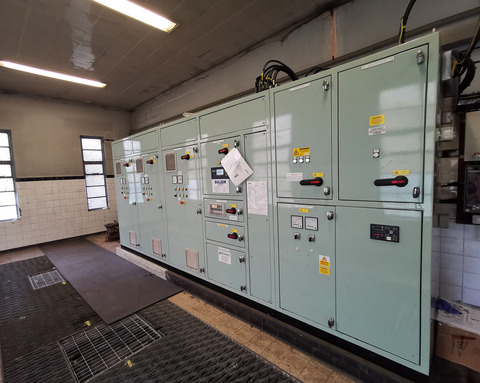Valves seal the deal for award-winning pumps project
20 Jun 2021

Anglian Water’s award-winning project improves performance and control of sewage pumping stations, with vital valves help from Sulzer
Management teams responsible for wastewater treatment plants and the pumping stations that supply them, have two major concerns: dealing with the incoming flow of wastewater and ensuring that all the pumping stations in the local network are operating effectively.
One of the major issues is pumps that have stopped working. The most common alert is when the pump controls trip and an alarm signal is sent to the control room. On the smallest stations, this situation would leave one pump to deal with the inflow of wastewater until an engineer arrives.
If the pump has to be lifted out of the well and cleared by hand, it requires lifting, safety barriers and considerable time, contributing to operating expense.
Another issue is pipe bursts; ageing infrastructure is susceptible to fractures caused by water hammer instigated by valves opening and closing quickly. Time and resources needed to reinstate the pipework are considerable, not to mention the inconvenience of having to divert flows around the damaged section. By introducing improved pump start/stop procedures, it is possible to ramp flows up and down which reduces the tendency for non-return valves (NRVs) to close suddenly.
One leading utility, Anglian Water, has a long-term plan to improve the management of its wastewater network and use pump efficiency data to develop a proactive maintenance program.
First step was to assess the necessary technology and evaluate its effectiveness in meeting the project targets, with the help of Sulzer.
Business development manager, control & monitoring, Sulzer Digital Solutions Jorgen Jager explains: “Our expertise in pump technology led us to offer the PC 441, which is a modular pump control system that works with the installed equipment. The additional functionality provides improved communications and additional sensor inputs.
The first trial pumping station was equipped with the PC441, a submersible pressure sensor and a 3G modem, all of which were connected to monitor the station using an existing PLC, ultrasonic level controller and the station telemetry. Although the two pumps in the station were of an identical specification, one of the first observations was that pump 2 was developing a significantly lower flowrate than pump 1. In addition, when a forced 2-pump pump-down was initiated, the pumps ran dry because the existing level detection system underperformed.
Sulzer’s data collection and visualisations highlighted this issue, as well as the difference in performance between the pumps. The original flow calculations involved manual set-points for the low pump capacity but the trial with the PC 441 offered an auto tuning sequence that is used to calculate pump capacity three to five times. In conjunction with the EC 531, a pump control and monitoring unit, Sulzer set up two setpoints that highlight the need for regular maintenance and emergency call outs.
The trial also used a pressure monitor of the outflow pipe that enabled the outflow calculations to be made with a more simplified setup procedure. When such a system is installed on a network of pumping stations, it is able to combine the data to produce accurate inflow figures for a treatment works using near-real time data.
During the commissioning of a newly refurbished station equipped with two new, identical pumps, one unit showed a 20% lower capacity than the other. It was discovered that one of the pumps was not properly seated on the pedestal, allowing leakage between the pedestal and the flange. Once corrected, both pumps showed the same capacity.
Following a successful trial period where many of the benefits of the Sulzer control package were demonstrated, Anglian Water has begun a roll-out of the technology across its network of sewage pumping stations. The project also involves ABB and Vega Controls, which provide the variable frequency drives (VFDs) and radar-based level sensors and pressure sensors respectively.
The ongoing success of the project, known as ‘Near Real Time Modelling’ has seen it nominated for a Pump Center award and it went on to win the Wastewater Innovation Project of the Year 2019 honour.

